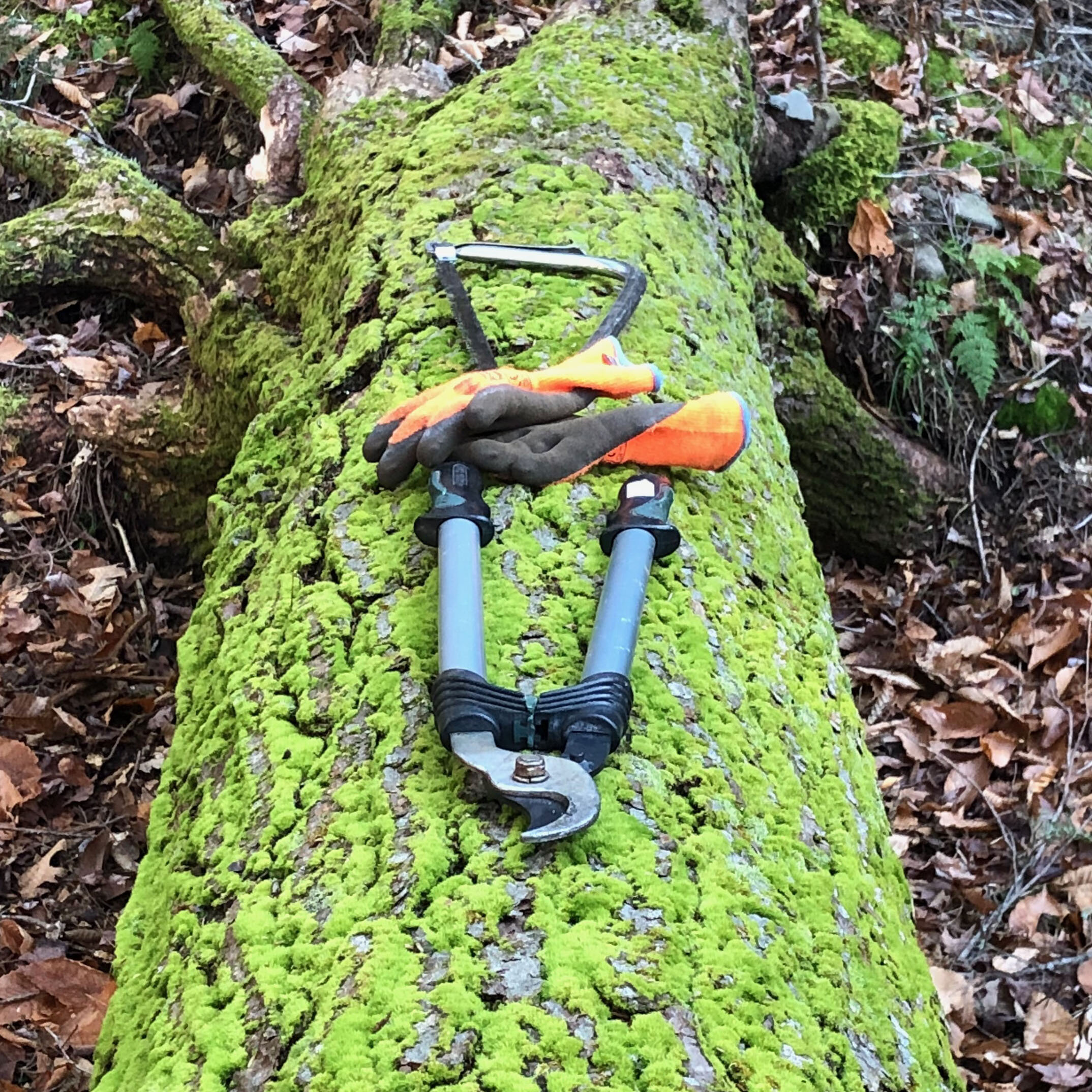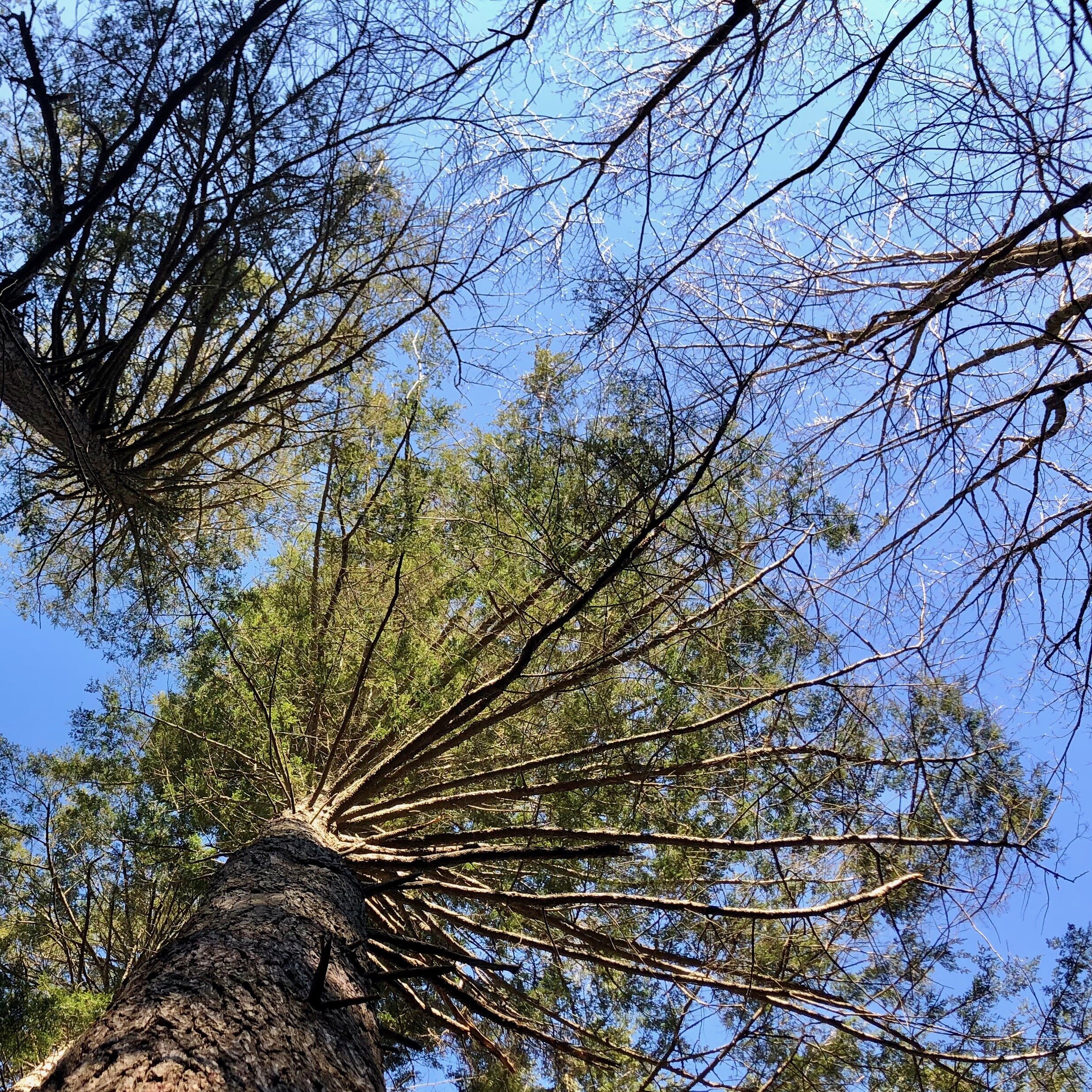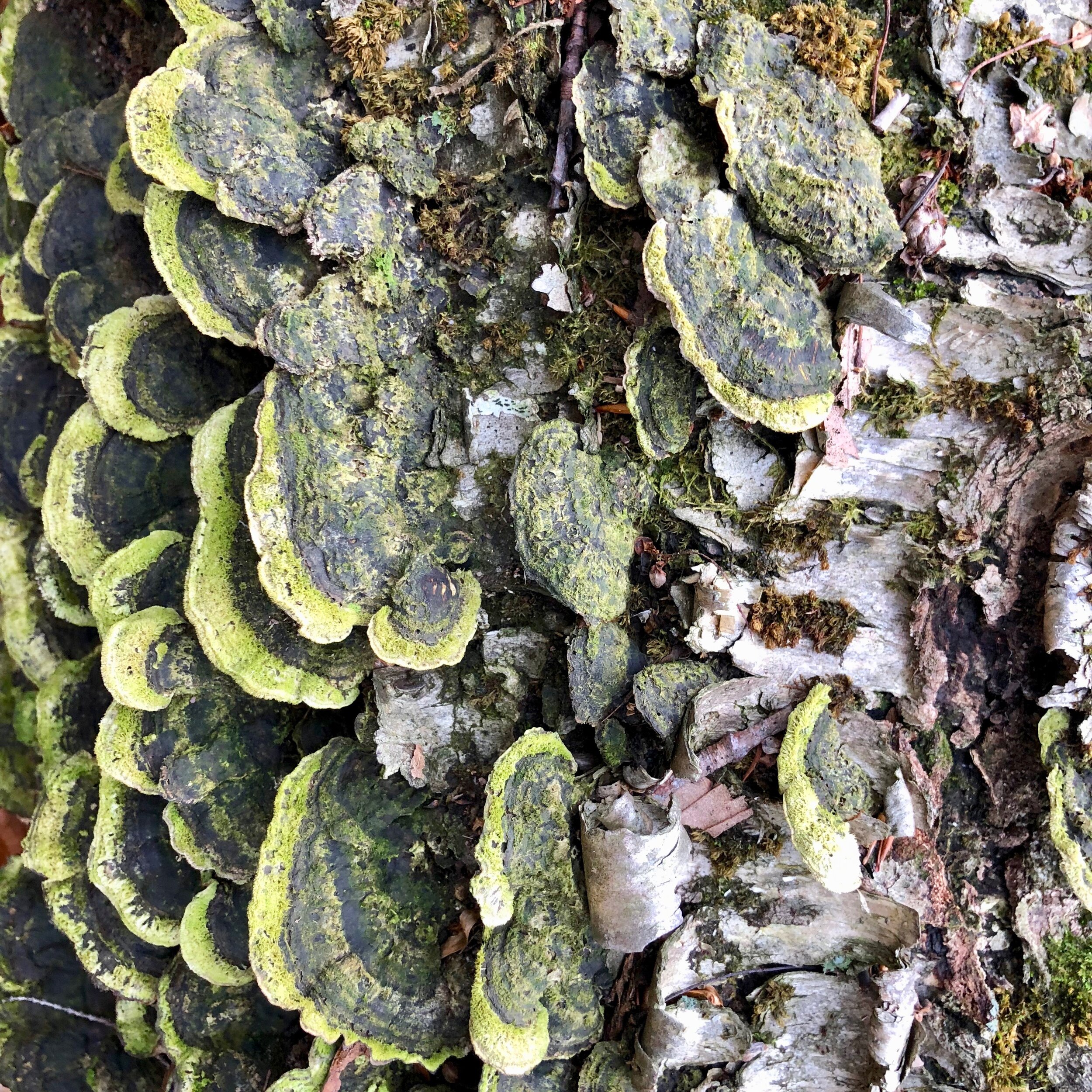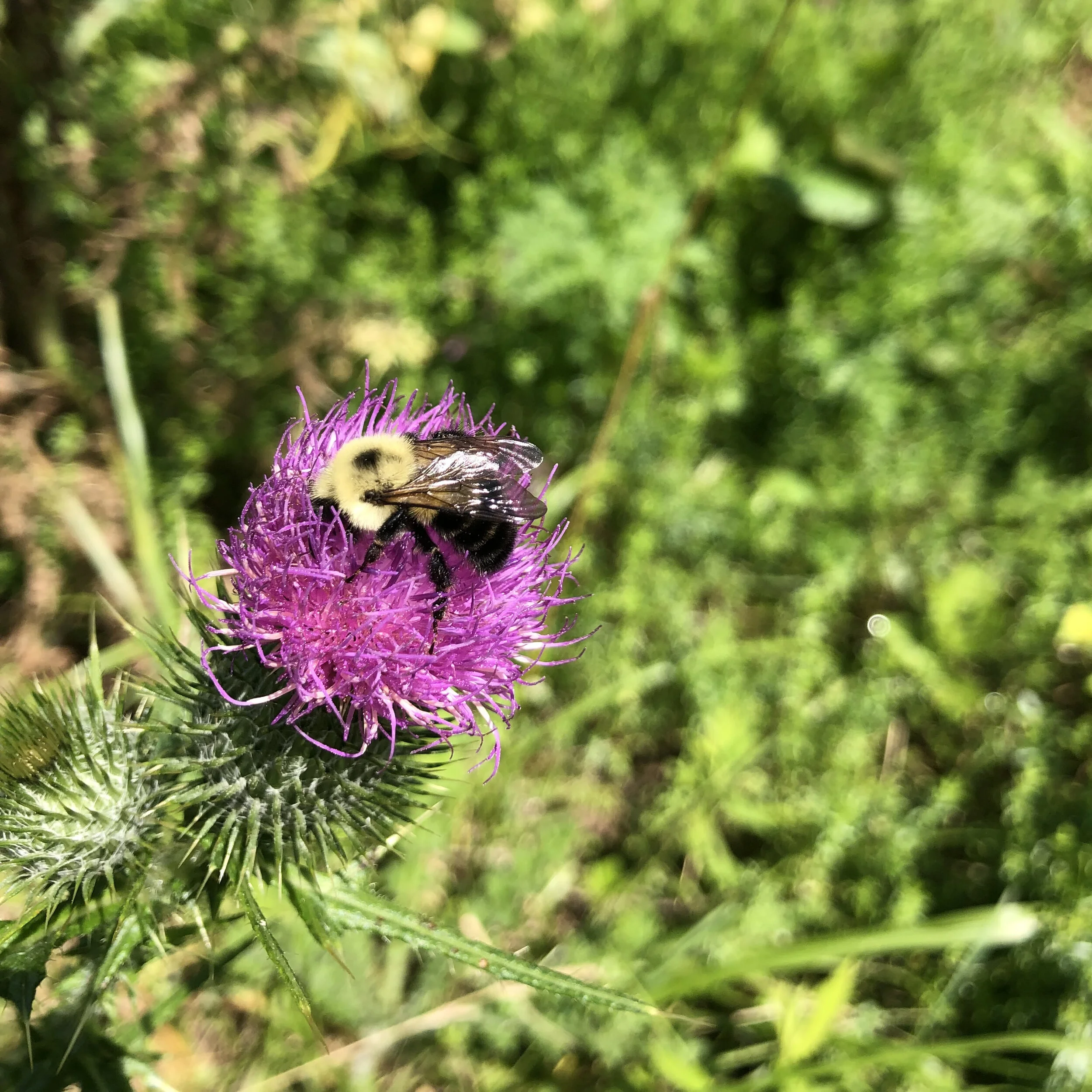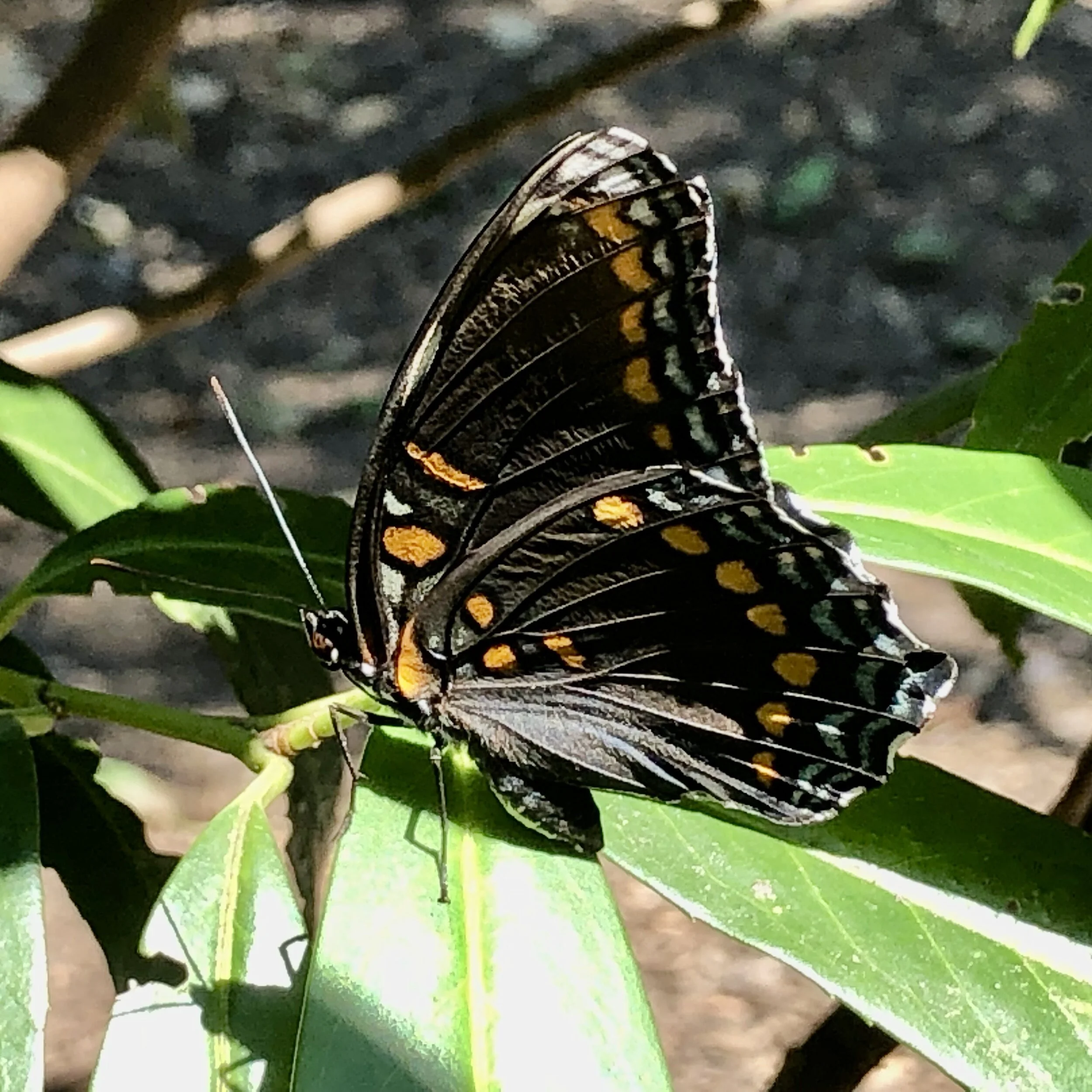I’m clearing and cutting in the woods, doing trail maintenance behind my house in the Catskills. Some shoots in the path are three feet high which tells you how long it’s been since I’ve done this.
Tools For Trail Maintenance In The Catskills
Beech trees grow up from the roots that extend across the path, and some of the original trees may have already died. This is the way beeches prolong their life. They find a patch of sun and the meristem (basically the “stem cells” of plants), dormant for many years can shoot up and create a whole new tree. Or not a new tree but the same tree in a different location. When I’m with 12-year-olds, I call them, “Sons of beeches.” They’ll never forget, and maybe think plants aren’t so boring after all.
I have friends, Patti and Bill, who maintain the nearby Rochester Trail. But I am doing this for purely a selfish reason: so I can get to the river easier.
Different Species In The Catskills
My dad, son of an English professor, would know the names of all these trees. But after cutting away three downed branches, he would sit down to muse about the place or its history. My mom, daughter of farmers, would not know or care for the names of these plants, but would love to see all the green moss popping up through the leaves and hear the grouse drumming in the distance. She could do this type of work for eight hours without stopping.
And then there is me, I guess a little of both. If I don’t know a plant’s name, I take a picture with my phone so I can identify it later (PlantNet is my current favorite App). I love botanical names. I know the Latin names of all the plants for sale in nurseries. I love what the names tell us about the plants. Take Witch-hazel: Hamamelis virginiana. The first word (or genus) comes from the Latin hama, meaning “at the same time,” and melon, meaning fruit. This small tree fruits and flowers at the same time. And the species virginiana tells us it’s from Virginia—in other words, the east coast.
I also like the fact that I can spot from a distance the ‘hops’ of a hornbeam even with all the leaves gone, and the catkins of a birch, and the seed capsules of Witch-hazels which have just finished blooming. But I’m not so good with the smaller local plants. I see moss as moss and mushrooms as mushrooms, but I’m learning to be more curious and have started to learn their names, too. Mushrooms like fan-shaped Turkey Tails on fallen logs, brittle Russula or a Bolete under an oak.
I can keep at this work for hours, too, like Mom, stripping off layers of clothes as I go.
Those of us who like this type of work wear layers as we are told to do in the cold, but not for the reason you think. It’s not to keep us warm, but to take them off. We know that in 40° F weather, after half an hour we’ll take off the first layer, another half hour and the second one is off, and so on.
Being Outside - Trail Maintenance In The Catskills
It’s hard work and it’s easy work, too. Being outside, I’m maybe the only person within half a mile. Me and my dog Garçon. Looking up at the sky, the trees forming a cathedral over me. It’s like going to church and the gym at the same time. Though it’s Thursday, I’d call this Sunday Service.
Some would question why clean I up the woods, since nature made it that way. I am leaving the logs where they are. It is good returned to the earth, and a great place for bugs to get food; but I like things a little tidy so I make giant snags with all the branches I pick up or cut away from the trail, piling them up in spots where they can return as nourishment to the earth but also create nice hiding places for small creatures. I don’t make a pile or snag on what looks like it might be a trail. It’s not a human trail, but someone else; deer, bear or fox. I can see a definite footpath, but barely. And sure, they could go around, but isn’t their life difficult enough already? So why add to that.
Trail maintenance in the Catskills reminds me of where the phrase “you are on rocky ground” comes from. A worn trail quickly becomes a stream in heavy rain, washing away the little bit of soil that was there, leaving a literal pile of rocks to walk on. You have to look down, watch where you step. A little like fighting an uphill battle. It’s not just whatever is uphill that you are battling, but also the hill.
I cut down suckers knowing their meristem, hiding just below the bark, will wait until spring and then start dividing cells to form another sapling. I may or may not get to them next year because I might have something else to do or someone else to tend to.
Making The Right Cut - Trail Maintenance
I know how to make a proper pruning cut, why and where. We call a good cut a “cookie” in the business. It is a perfect, clean circle. But sometimes you can’t do a good cut. The branch that needs to go is too close to another to use a pruning saw, or too upright to the main stem to get your loppers in. Then there are the branches, hanging precariously, stuck on another branch above. I called them “dangling participles” because I like the way it sounds—not because I know what it really is. Something about nouns and verbs. I know that a dead branch dangling above the path is not good grammar either.
While tending to trails, it is not really about the end result but the doing that matters. And in the end, the tender and the recipient both benefit.
If you have any questions or anything to add about trail maintenance in the Catskills please comment below. I would love to hear!
Learn more about me Carolle Huber and the inspiring sustainable landscapes that I design here.
Carolle

